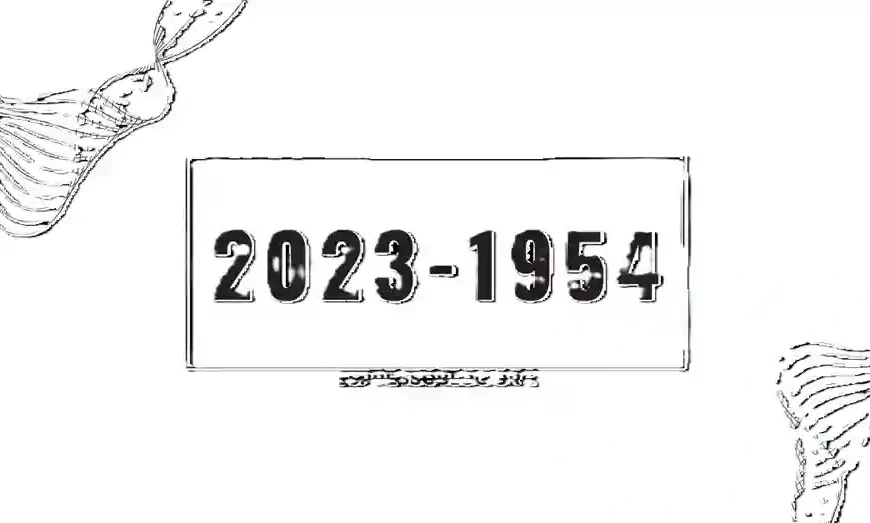Early Resources: 1954-1970
2023-1954 For a long time after World War II, mechanical progress centered on the commonsense application of logical information, beginning with major advances in computing and communication. The period 1954-1970 represented fundamental advances, laying the foundation for the computerized age that would shape future innovations.The Rise of Computing: From Vacuum Tubes to Transistors
In 1954, the world was still in the early stages of computing. Beginning with computers, such as ENIAC (Electronic Numerical Integrator and Computer), used vacuum tubes and were huge, room-sized machines. In any case, the development of the transistor in 1947 and its subsequent commercialization in the 1950s marked a turning point. Transistors allowed for smaller, more reliable and energy-efficient computers, paving the way for the development of personal computers decades later. In 1960, IBM introduced the IBM 1401 to begin with a display computer aimed at businesses. This was a breakthrough in computing innovation, as it allowed for more efficient handling of information. It wasn’t until the 1970s that smaller, more affordable personal computers began to appear. But its foundations were laid in the 1950s and 1960s when the infrastructure for chips and coordinate circuits was being laid.The Space Race and Satellites: A Jump to the Future
2023-1954 Another important innovative achievement during this period was the space race, which culminated in the moon landing of the Apollo 11 mission in 1969. The rapid pace of rocket innovation, driven by advances in computing, materials science, and communications, tested a turning point in human inquiry and the use of innovation to solve complex problems. Satellite communications took over after the revolution, and in the 1960s, starting with geostationary satellites like Telstar, it made it possible to transmit TV signals and other forms of communications across continents. This period saw early improvements in global route frameworks and propellants in radar, which were not important for military purposes but for the global positioning framework (GPS) we rely on today.The Individual Computing Era: 1970-1990
As we move into the 1970s and 1980s, the personal computer transition begins to take shape. Mechanical advances in chips and graphical interfacing drove the creation of affordable and user-friendly personal computers.The Coming of the Individual Computer: Apple and IBM
2023-1954 In 1975, the shipment of the Altair 8800 marked the beginning of widely recognized personal computers. Although it was not user-friendly by today’s standards, it sparked curiosity in computing among experts and engineers. Be that as it may, it was Apple’s release of the Apple II in 1977 that would bring personal computing to the standard. The Apple II was one of the first successful personal computers, supporting a color display and a variety of computer program applications. In the early 1980s, IBM entered the personal computing market, starting with the PC in 1981. The IBM PC, which was based on an open design, made it the industry standard, and numerous program designers began to conform applications. IBM PC. It’s an urgent moment that allows the PC to become an essential part of businesses and households worldwide.The Rise of the Web and Early Advanced Communication
The 1980s also saw early advances in the web. Although the Web as we know it today did not exist, the ARPANET, the predecessor of the Web, researched education in the respective colleges and states of the United States. In 1983, the Space Title Framework (DNS) was created, allowing clients to more easily explore websites. In the late 1980s and early 1990s, the Web began to take on a global scale. The introduction of graphical web browsers such as Mosaic in 1993 and the commercialization of the web in the mid-1990s led to the World Wide Web.The Advanced Transformation: 1990-2010
The 1990s and 2000s examined the rise of the web, feature phones, and the proliferation of computerized innovations. During this time, computers became more capable and available, and the web became a fundamental part of everyday life.The web boom and the dot-com era
2023-1954 Introduced during the web boom in the 1990s. Major innovation companies like Microsoft, Google and Amazon have emerged, reshaping how we engage with data, merchandise and administration. The expansion of individual computers, combined with the development of faster and more reasonable web associations, has allowed millions of individuals around the world to access the web. Search engines like Google, founded in 1998, changed the way we find data. With its modern computing, Google became the most prevalent look engine, and its victory paved the way for a broader move toward the Web as a device for data retrieval, commerce, and communication. The dot-com boom of the late 1990s saw an explosion of online companies, and even as the bubble burst in 2000, the Web continued to evolve, inevitably becoming a fundamental part of commerce and personal life.The rise of smartphones and versatile technology
In the mid-2000s, a modern category of gadget would reimagine the advanced scene: the smartphone. The introduction of the iPhone in 2007 by Apple changed everything. It was launched with Gadgets to combine a versatile phone, a web browser and other highlights into a sleek, user-friendly interface. The iPhone’s triumph led to the advancement of countless portable apps and gadgets that would shape today’s communication, excitement, and commerce. As smartphones become more efficient and reasonable, portable computing has become an essential part of everyday life. Social media platforms such as Facebook, Twitter, and Instagram allow clients to communicate and share objects in untapped ways, driving the rapid development of the Web and reshaping society’s approach to communication.Cloud Computing and Big Data
Cloud computing also emerged as a significant innovation during this period, changing how businesses store and manage information. Companies such as Amazon, Google, and Microsoft have built massive data centers that allow businesses and people to store information online, providing access to efficient computing resources without the need for expensive hardware. In parallel, the rise of big data—masses of data that can be analyzed for meaningful insights—is transforming a wide range of businesses, from healthcare to entertainment. Businesses are increasingly dependent on data-driven decision-making, and innovations such as machine learning and artificial intelligence begin to develop as devices to prepare and understand limitless data.The Age of Fake Insights and Robotization: 2010-2023
During the period 2010 to 2023, innovation has reached extraordinary levels. Artificial intelligence, mechanization, and advancing mechanical technology have begun to change business and everyday life in significant ways.The rise of false intelligence
Artificial Intelligence (AI) has seen amazing propulsion over the past decade. AI frameworks are nowadays able to perform tasks that were once the domain of humans, from dialect interpretation to recursive inference to driving vehicles. AI-powered assistants like Siri, Alexa, and Google Partner have ended up a ubiquitous part of everyday life, while deep learning innovations have powered advances in areas like image recognition and character dialect processing. In 2012, deep learning gained critical attention when a neural network developed by Google was able to recognize and classify images with surprising accuracy. These advances have opened the door to more advanced AI applications, and by 2023, AI is being used in a wide range of businesses, from autonomous vehicles to healthcare, to optimize decision-making and advance efficiency.The robotization revolution
Automation has changed business that extends from fabrication to coordination of client facilities. Advances in mechanical engineering, AI, and machine learning have driven the advancement of machines that can perform tasks with greater accuracy and speed, reducing the need for human intervention. One of the outstanding developments in mechanization is the rise of autonomous vehicles. In the 2010s, companies like Tesla, Waymo and Uber began developing self-driving cars, and by 2023, autonomous vehicles will be an increasingly common sight on the road.The Development of the Web of Things (IoT)
2023-1954 The Web of Things (IoT) refers to the interconnected system of gadgets that communicate with each other over the Web. It includes everything from smart home gadgets like indoor controllers and security cameras to mechanical sensors and wearable wellness trackers. IoT has enabled real-time data collection and investigation, allowing for smarter cities, better healthcare administration and more efficient mechanical processes. 2023-1954 In 2023, the IoT is set to expand, with billions of gadgets connected to it. These gadgets are making a difference to mechanize homes, track health metrics and screen the health of structures like bridges and control lines.Conclusion
Between 2023-1954 mechanical advances reshaped every aspect of human life. From the early days of computing to the rise of AI and computerization, these developments have transformed business, social systems, and our daily schedules. The future of innovation indeed promises more, with advances in quantum computing, biotechnology and economic vitality on the horizon. As we look back over the period from 1954 to 2023, it is clear that innovation has not changed the way we live and work but has reimagined what is conceivable, and will go on to shape the world in the long run. time to comeRead More latest Posts
- Tab66 Online Casino: Where Real Money and 918Kiss Dominate
- How to Deposit and Withdraw Funds Securely on Rupee7
- Kemono Party: The Best Digital Art Hub in 2024!
- Unbeatable Odds and Features at Metabet63 Nepal Betting Site
- Food Fonts: How Typography Influences Appetite and Restaurant Branding
(Visited 11 times, 1 visits today)
Tags: 2023-1954 Last modified: January 9, 2025










